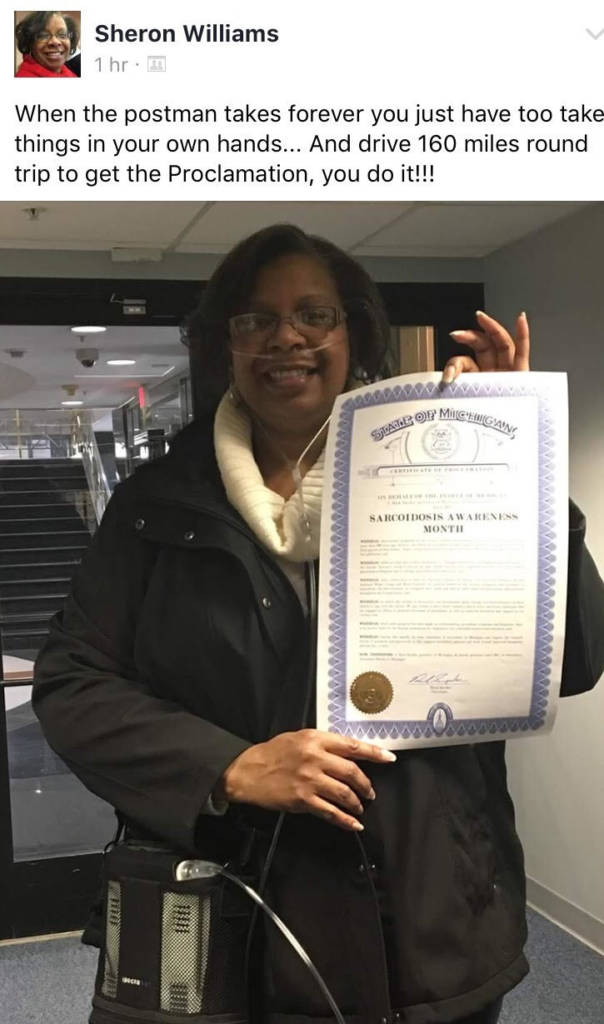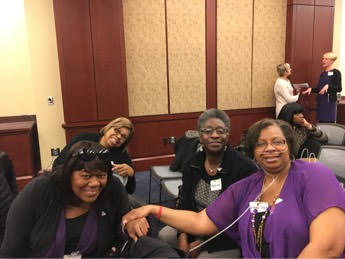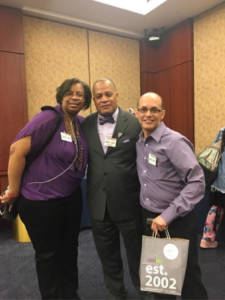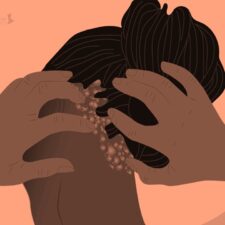
Sheron Williams was 27 years old, attending college full-time, in a theatre production and working two jobs on campus when she was first diagnosed.
“I would have mystery illnesses and I would simply push through it,” Williams says. “I just thought I was running myself down.”
Twenty-five years ago, Williams found out it was more than that. On that day, she was told that her watering eyes, vision problems, leg swelling, fatigue and rashes were actually due to a disease called sarcoidosis.
A disease with no known cause
Sarcoidosis is a disease of unknown origin that causes the immune system to overreact, leading to lung damage, skin rashes and other organ damage. This once rare disease now affects 200,000 people in the United States.
“The cause or causes of sarcoidosis are not clear, but most experts agree that sarcoidosis is caused by an environmental exposure, most often transmitted to the lungs,” explains Dr. Elliott D. Crouser, a lung specialist with The Ohio State University Wexner Medical Center who treats sarcoidosis, and a spokesperson for the Foundation for Sarcoidosis Research.
He adds that, in sarcoidosis, this exposure causes clusters of immune cells, called granulomas, to form in the lungs or other organs. Symptoms can also come and go on its own, without treatment.
Sarcoidosis affects Black women disproportionately, with studies like the Black Women’s Health Study confirming this finding and highlighting the need to address health disparities in sarcoidosis. It is not well understood why African-American women are more affected.
“It is clear that much more research needs to be done to understand sarcoidosis in Black women,” says Crouser.

The disease also affects women more than men, and people between the ages of 20 and 50 years of age more than other age groups.
Black Americans also have a more severe disease presentation, says Crouser. In Williams’ case, her symptoms progressed in just under a year to where she couldn’t swallow liquids or her own saliva, and her voice became affected.
“The doctors came in and begin saying that the sarcoidosis was traveling through my body,” she recalls. Then, she got the news: sarcoidosis was in her spine, causing the new symptoms.
She spent three weeks in the hospital then, ultimately going home with a feeding tube, until she could eat food again.
Tough to pinpoint
Some cases of sarcoidosis can be very difficult to diagnose because the symptoms can mimic a lot of other diseases. Williams says she had symptoms for years before her actual diagnosis.
“I will admit, I thought I must be crazy, because they couldn’t find anything,” says Williams. “I would later find out it takes an average of five to seven years for a person [with sarcoidosis] to be diagnosed.”
Dr. Jen Caudle, a board-certified osteopathic family physician and associate professor at Rowan University School of Osteopathic Medicine says that the diagnosis can be tricky.
“A patient with sarcoidosis in the lungs may have coughing, wheezing or chest discomfort, and that might be mistaken for asthma instead of sarcoidosis,” Caudle explains. “Other symptoms that people may have include fever, pain, fatigue, rash and headaches. These symptoms sound like they could be part of something else, so we may not think of sarcoidosis.”
Sarcoidosis itself can look differently in different patients. Crouser says that there are basically three clinical patterns of sarcoidosis: mild disease that’s barely noticeable, disease that flares up occasionally, and disease that is always active, requiring treatment to keep it at bay.

But, even once sarcoidosis is suspected, diagnosis is not straight-forward.
“There is no reliable laboratory test to identify who has sarcoidosis and who does not,” Crouser says.
Instead, the diagnosis is made with a combination of imaging -- such as CT scans, MRI scans or PET scans – as well as lab work, biopsies, and possibly consultations with specialists.
Caudle says that one of the things that her newly-diagnosed patients with sarcoidosis have in common is that they had symptoms that lingered.
“If the symptoms keep recurring and they don’t seem to go away, or you don’t seem to feel like yourself or go back to normal, it’s a reason to see your doctor,” says Caudle. “The biggest thing is trusting your gut.”
“Patients are sometimes their best advocates,” Caudle adds.
Remaining hopeful
Williams is now 52 years old. She has been on oxygen for the last seven years, and has had to stop working. But, she is now on a regimen that works well for her. She volunteers and remains positive.
“I think of things I can do, and not about what I can’t,” Williams says, about how she copes. “I come up with new ways to do things I really want to do.”
Seven years ago, she was able to keep her vacation plans to Jamaica, despite being newly ordered to wear oxygen. She found a portable oxygen machine that she could take on the flight and, with the help of her friends, she participated in activities and had a great time.

Williams is also a patient ambassador for sarcoidosis. With the help of the Foundation for Sarcoidosis Research, she started a local support group in Ann Arbor, Mich., providing education and emotional support to sarcoidosis patients, their families and their friends. She was also instrumental in the State of Michigan issuing a Proclamation for April as Sarcoidosis Awareness Month.
But, Williams is not done.
“I would like to see doctors get more educated about the disease,” she says, “a disease that has been around for over 100 years and with more people being affected [by sarcoidosis].”
Crouser is hopeful: “Over the past 10 years, I have witnessed growing momentum in the field and I am hopeful this momentum will continue to build.”
Caudle reminds other patients to also remain positive.
“It’s not the end of the world,” she says. “It is a condition that can be managed very well. People can live very healthy and happy lives with sarcoidosis. The first step is getting diagnosed.”
 Dr. Tyeese L. Gaines is a physician-journalist with nearly 15 years of print, online and broadcast experience. She is a practicing emergency medicine physician based in New Jersey and owner/media strategist for Doctor Ty Media, LLC. Follow her on twitter at @doctorty.
Dr. Tyeese L. Gaines is a physician-journalist with nearly 15 years of print, online and broadcast experience. She is a practicing emergency medicine physician based in New Jersey and owner/media strategist for Doctor Ty Media, LLC. Follow her on twitter at @doctorty.









